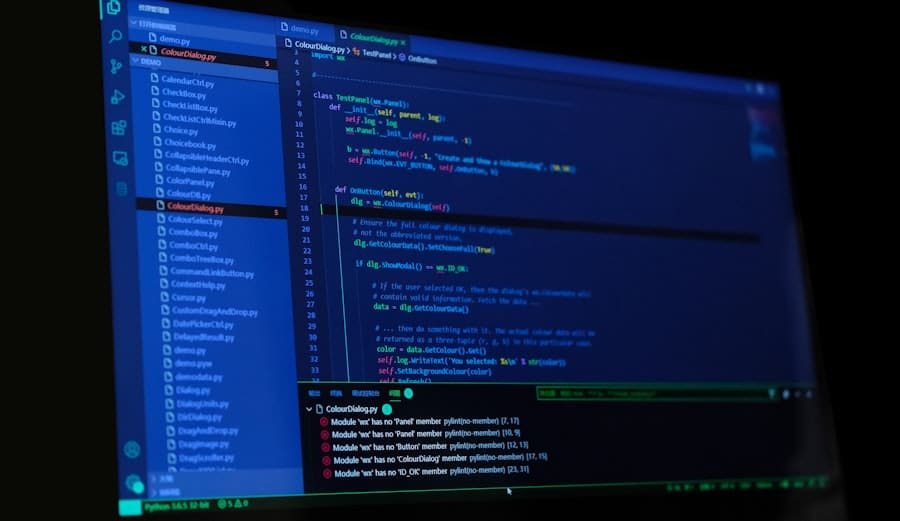The evolution of cloud computing has led to the emergence of multi-cloud environments, where organizations leverage services from multiple cloud providers to meet their diverse needs. This trend has gained momentum as businesses seek to avoid vendor lock-in, enhance redundancy, and optimize costs. By distributing workloads across various platforms such as Amazon Web Services (AWS), Microsoft Azure, and Google Cloud Platform (GCP), companies can take advantage of the unique strengths of each provider.
For instance, a company might use AWS for its robust storage solutions while utilizing Azure for its advanced machine learning capabilities. This strategic approach allows organizations to tailor their cloud architecture to their specific requirements, ensuring they remain agile and competitive in an ever-evolving digital landscape. The rise of multi-cloud environments is also driven by the increasing complexity of applications and the need for greater flexibility.
As organizations adopt microservices architectures and containerization technologies like Kubernetes, they find themselves needing to deploy applications across different cloud platforms seamlessly. This shift not only enhances operational efficiency but also enables businesses to innovate faster by leveraging the best tools available in the market. Furthermore, the growing demand for data sovereignty and compliance with regional regulations has prompted many organizations to adopt multi-cloud strategies, allowing them to store data in specific geographic locations while still benefiting from the scalability and performance of cloud services.
Key Takeaways
- Multi-cloud environments are on the rise as organizations seek to leverage the strengths of different cloud providers for their diverse needs.
- Version control in multi-cloud environments presents challenges such as ensuring consistency across different cloud platforms and managing dependencies between versions.
- Integration of version control systems with multiple cloud providers requires careful planning and implementation to ensure seamless collaboration and deployment.
- Security and compliance considerations are crucial in multi-cloud version control to protect sensitive data and ensure adherence to industry regulations.
- Automation and orchestration play a key role in multi-cloud version control, enabling efficient management of resources and workflows across different cloud platforms.
Challenges of Version Control in Multi-Cloud Environments
While multi-cloud environments offer numerous advantages, they also introduce significant challenges, particularly concerning version control.
When teams utilize various cloud services, they often end up with multiple versions of the same application or service, leading to confusion and inconsistencies.
This fragmentation can hinder collaboration among development teams, as they may struggle to synchronize their work across different environments. For example, a developer working on a feature in one cloud might inadvertently overwrite changes made by a colleague in another cloud, resulting in lost work and increased frustration. Another challenge is the lack of standardized tools and processes for version control across different cloud providers.
Each platform may have its own set of tools and workflows, making it difficult for teams to establish a cohesive version control strategy. This inconsistency can lead to errors in deployment and integration, as developers may not be familiar with the specific requirements or limitations of each cloud environment. Additionally, managing dependencies across multiple clouds can become increasingly complex, as different services may rely on varying versions of libraries or frameworks.
As a result, organizations must invest time and resources into developing robust version control practices that can accommodate the intricacies of multi-cloud environments.
Integration of Version Control Systems with Multiple Cloud Providers

To effectively manage version control in multi-cloud environments, organizations must integrate their version control systems with various cloud providers. This integration involves establishing a unified workflow that allows teams to track changes, manage branches, and collaborate seamlessly across different platforms. One approach is to utilize cloud-agnostic version control systems like Git, which can be configured to work with multiple cloud providers simultaneously.
By adopting such systems, organizations can create a centralized repository that serves as a single source of truth for their codebase, regardless of where it is deployed. Moreover, integrating version control systems with continuous integration and continuous deployment (CI/CD) pipelines is crucial for maintaining consistency across multi-cloud environments. By automating the build and deployment processes, organizations can ensure that code changes are automatically tested and deployed to all relevant cloud platforms.
For instance, a CI/CD tool like Jenkins can be configured to trigger builds in response to changes in a Git repository, deploying the latest version of an application across multiple clouds without manual intervention. This level of automation not only streamlines workflows but also reduces the risk of human error during deployment.
Security and Compliance Considerations in Multi-Cloud Version Control
Security and compliance are paramount concerns when managing version control in multi-cloud environments. With sensitive data often distributed across various cloud providers, organizations must implement stringent security measures to protect their code repositories and associated data. One critical aspect is ensuring that access controls are consistently enforced across all platforms.
This includes implementing role-based access controls (RBAC) that restrict access to code repositories based on user roles and responsibilities. By doing so, organizations can minimize the risk of unauthorized access and potential data breaches. Compliance with industry regulations is another significant consideration when managing version control in multi-cloud environments.
Different cloud providers may have varying compliance certifications and standards, making it essential for organizations to understand the implications of storing code and data across multiple platforms. For example, companies operating in regulated industries such as finance or healthcare must ensure that their version control practices align with standards like HIPAA or PCI DSS. This may involve conducting regular audits of code repositories and implementing encryption protocols to safeguard sensitive information during transmission and storage.
Automation and Orchestration in Multi-Cloud Version Control
Automation plays a crucial role in enhancing version control processes within multi-cloud environments. By automating repetitive tasks such as code reviews, testing, and deployment, organizations can significantly reduce the time required to deliver new features and updates. Tools like GitHub Actions or GitLab CI/CD enable teams to define workflows that automatically trigger actions based on specific events, such as code commits or pull requests.
This level of automation not only accelerates development cycles but also ensures that best practices are consistently followed throughout the version control process. Orchestration is equally important in managing complex workflows across multiple cloud providers. By utilizing orchestration tools like Terraform or Ansible, organizations can define infrastructure as code (IaC) templates that automate the provisioning and management of resources across different clouds.
This approach allows teams to maintain consistency in their deployment processes while reducing the risk of configuration drift between environments. For instance, a team could use Terraform to define a multi-cloud architecture that provisions resources on both AWS and Azure simultaneously, ensuring that all components are deployed according to predefined specifications.
Scalability and Performance in Multi-Cloud Version Control

Distributed Version Control Systems
One way to achieve scalability is by leveraging distributed version control systems like Git, which allow multiple developers to work on different branches simultaneously without affecting the overall performance of the repository. This distributed model enables teams to scale their development efforts efficiently while maintaining a high level of collaboration.
Performance Optimization Strategies
Performance optimization is also essential when managing version control across multiple clouds.
To mitigate this challenge, organizations can implement caching strategies or utilize content delivery networks (CDNs) to improve access speeds for distributed teams.
Repository Structure Optimization
Optimizing repository structures by organizing code into smaller modules can enhance performance by reducing the time required for cloning or fetching changes from remote repositories. This approach can significantly improve the overall efficiency of version control systems in multi-cloud environments.
Collaboration and Communication in Multi-Cloud Version Control
Effective collaboration and communication are vital components of successful version control in multi-cloud environments. With teams often dispersed across different locations and working on various cloud platforms, establishing clear communication channels is essential for ensuring alignment on project goals and timelines. Tools like Slack or Microsoft Teams can facilitate real-time communication among team members, allowing them to discuss changes, share feedback, and resolve issues quickly.
Moreover, fostering a culture of collaboration is crucial for maximizing the benefits of multi-cloud version control systems. Organizations should encourage developers to participate in code reviews and pair programming sessions, regardless of their physical location or the cloud platform they are using. By promoting open communication and knowledge sharing among team members, organizations can enhance their overall development processes and ensure that everyone is working towards a common objective.
Future Trends in Multi-Cloud Version Control Systems
As technology continues to evolve, several trends are likely to shape the future of version control systems in multi-cloud environments. One significant trend is the increasing adoption of artificial intelligence (AI) and machine learning (ML) technologies to enhance version control processes. AI-driven tools can analyze code changes and provide insights into potential issues or vulnerabilities before they become critical problems.
This proactive approach can help teams maintain higher code quality while reducing the time spent on manual reviews. Another emerging trend is the growing emphasis on DevOps practices within multi-cloud environments. As organizations strive for greater agility and faster delivery cycles, integrating development and operations teams will become increasingly important.
This shift will necessitate the adoption of more sophisticated version control systems that support collaborative workflows and enable seamless integration with CI/CD pipelines across multiple clouds. By embracing these trends, organizations can position themselves for success in an increasingly complex digital landscape where multi-cloud strategies are becoming the norm rather than the exception.
There is an interesting article on the best software for literature review that discusses tools and techniques for conducting thorough research in academic and professional settings. This article could be useful for individuals looking to enhance their research skills and streamline their literature review process, especially when working on projects that require in-depth analysis and critical evaluation.
FAQs
What are version control systems?
Version control systems are software tools that help in managing changes to source code, documents, and other files. They track modifications to files, allowing multiple developers to collaborate on a project and keep track of different versions of the files.
What is a multi-cloud environment?
A multi-cloud environment refers to the use of multiple cloud computing services in a single architecture. This can involve using different cloud providers for different services, or using multiple cloud services from a single provider.
How are version control systems adapting for multi-cloud environments?
Version control systems are adapting for multi-cloud environments by providing features that support collaboration and integration across different cloud platforms. This includes support for multiple repositories, seamless integration with various cloud services, and enhanced security measures to protect data across different cloud environments.
What are the benefits of using version control systems in multi-cloud environments?
Using version control systems in multi-cloud environments provides benefits such as improved collaboration among developers working in different cloud environments, better control and tracking of changes across multiple cloud platforms, and enhanced security and compliance measures for managing data in diverse cloud environments.
What challenges do version control systems face in multi-cloud environments?
Challenges for version control systems in multi-cloud environments include ensuring seamless integration with different cloud platforms, managing access and permissions across multiple cloud services, and maintaining data consistency and integrity across diverse cloud environments.

